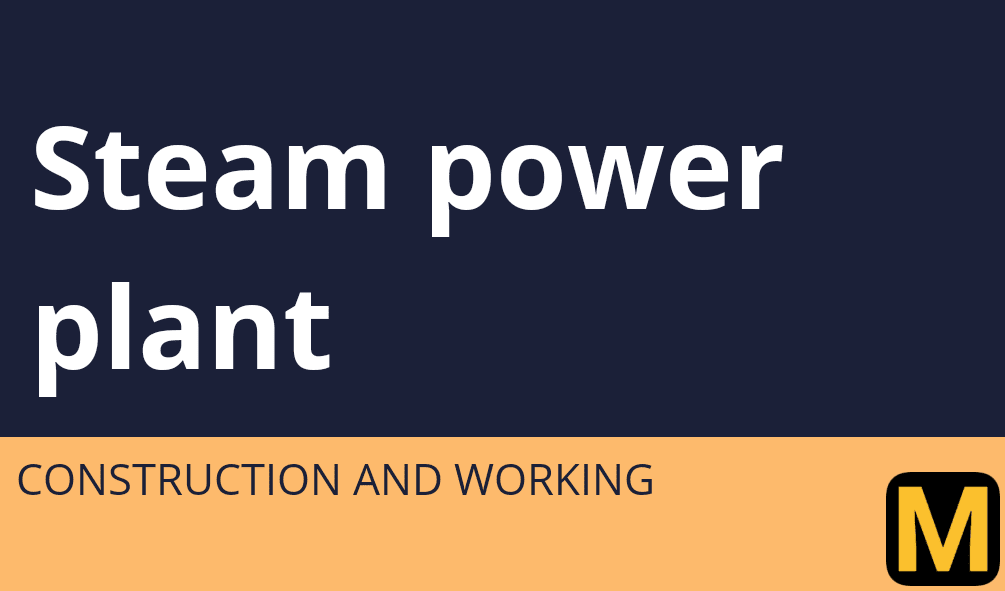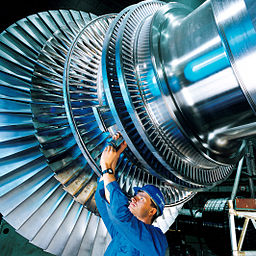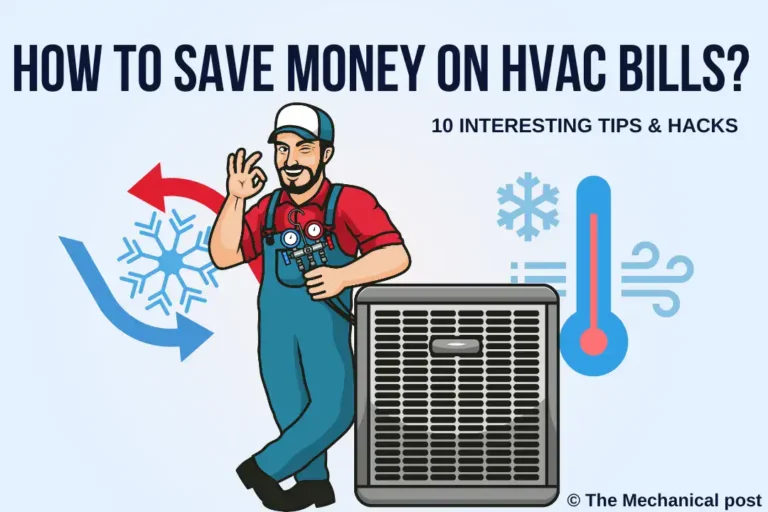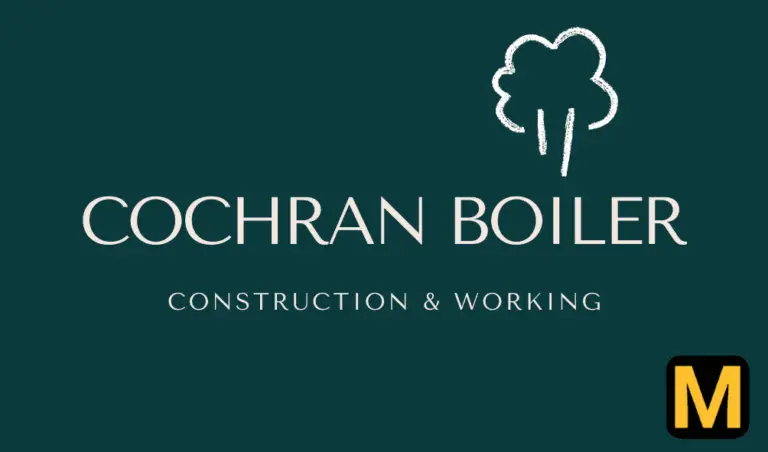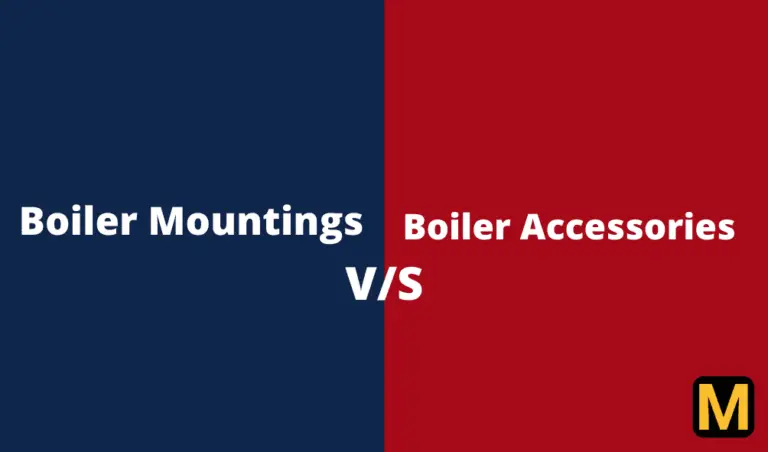Thermal power plant – layout, working, advantages and limitations with PDF
Hello reader! Welcome back to The Mechanical post. Today in this article we will see:
- What is a thermal power plant?
- The layout of the thermal power plant,
- Working of the thermal power plant,
- Advantages and limitations of a thermal power plant.
To download the PDF on the steam power plant, click on the button provided at the bottom of the post.
Introduction
Thermal power plants make up for almost half of the world’s power demand. They use steam as the working fluid. Modern thermal power plants are capable to run efficiently by conforming to stringent environmental standards.
However, the coal-fired thermal power plant cannot compete in emissions with the likes of hydro-electric power plants, solar plants, wind, and tidal energy, etc.
What is a Thermal power plant?
A thermal power plant is a power generation station that converts the heat energy produced by the combustion of fuel into electric energy. The heat energy of the fuel is used to convert water into steam at high pressure.
This high-pressure steam is passed over the turbine. The rotation of the turbine produces electricity with the help of a generator.
Construction of Thermal power plant
The thermal power plant consists of the following major components :
- Boiler.
- Steam turbine.
- Generator.
- Condenser.
- Cooling tower.
- Pumping system.
Boiler
The boiler is a large vessel in which water is heated by the combustion of fuel. Water is converted into steam in the boiler. The boiler is capable of withstanding the immense pressure exerted by the steam.
LaMont boiler, Locomotive boiler, Lancashire boiler, Cochran boiler, Bab-cock and Wilcox boiler, etc are some of the types of boilers.
Boilers are classified into many types on the basis of their operating pressure, heating type, capacity, type of fuel, type of water circulation, etc.
Read more in detail about Boiler and their types.
Boilers are fitted with boiler mountings for efficient and safe working of the boiler. The fittings include:
- Safety valve.
- Pressure measuring devices.
- Blowdown valves.
- Main steam stop valve.
- Feed check valves.
- Fusible plug.
- Water level indicator.
- Low-water alarm.
- Low water fuel cut-out.
- Boiler feedwater pump.
Well if we start talking about it the article would be too long to handle!
But don’t worry we have a detailed article on Boiler mountings and accessories. This link would open in a new tab so that you can finish reading this article and then enjoy reading the next.
Steam Turbine
The turbine is the heart of the power plant. It consists of aerodynamically designed vanes. The high-pressure steam when passed over the turbine blades, causes it to rotate at a high velocity.
The main function of the turbine is to convert the pressure and kinetic energy of the steam into rotatory mechanical energy.
The shaft of the turbine is coupled with the shaft of the generator. Steam turbines are mainly classified into 2 types on the basis of construction and working principle:
- Impulse turbine
- Reaction turbine
Generator
The generator is the device that converts mechanical energy into electrical energy. The turbine shaft is coupled to the generator. Thus, the rotary mechanical power of the turbine causes the rotor of the generator to rotate, thus producing electrical energy.
Steam Condenser
The steam from the turbine exits and enters the condenser. The condenser is a device that cools the steam and converts it back into the water. This water can be reused as feedwater for the boiler.
 |
| By Mbeychok – Own work, Public Domain |
The most popular type of condenser is the surface condenser. It consists of water tubes over which the steam passes. Heat transfer takes place due to which the steam condenses and converts into water.
The condensed steam is collected at the bottom. While the cooling water which becomes hot due to heat transfer is sent to the cooling tower for cooling.
What is the main function of the condenser?
There are 2 main functions of the condenser.
- To maintain a very low pressure or vacuum at the end of the turbine, so that the steam can expand as much as possible in the turbine. The more expansion, the more is the work obtained (i.e. electricity is produced)
- The other function of the condenser is to cool down the steam and convert it into water.
Cooling tower
The cooling water’s temperature increases as it absorbs heat from the steam. Thus to reduce the temperature of the cooling water, it is passed through the cooling tower.
 |
|
By – Tim Reckmann / CC BY-SA
|
The cooling tower is a tall open structure. The cooling water is sprayed from a height, thus the water falls down under the influence of gravity. The falling droplets of water are cooled by air naturally.
During this process some of the droplets evaporate, thus we see a white cloud-like formation coming out of the cooling tower. The water is collected at the bottom and is again pumped to the condenser for cooling purposes.
The pumping system of steam power plant
The pumping system of the power plant takes care of the transportation of the fluids in the power plant accordingly.
A boiler feed pump is a type of Multi-stage Centrifugal pump which feeds water to the boiler against the immense pressure of the boiler.
Another pump is used to transport the condensed water from the condenser to the feed pump.
Working of Steam power plant
The following is the working of steam power plant:
 |
| By Milton Beychok (after John Pye) / CC BY-SA |
- Boilers mainly are coal-fired, however, oil and other types of fossil fuels are also used at some power stations.
- The feedwater pump feeds the water into the boiler. The water is converted into steam inside it.
- This steam is then carried and delivered to the turbine. The steam enters the turbine via a nozzle. The nozzle helps increase the velocity of the steam.
- The high-pressure steam passes over the vanes of the turbine exerting force on it. While passing over it the pressure of the steam reduces as its velocity increases. This causes the turbine to rotate at a high r.p.m. The turbine is coupled to a generator which produces electricity.
- The electricity produced is then step-up or step-down accordingly and distributed for industrial and domestic purposes.
- According to the load, the electricity production can be controlled by controlling the amount of steam entering through the nozzle. This is called as governing of the turbine.
- The steam then enters the condenser, where it is condensed and then further transported back to the boiler feed pump and the cycle goes on.
You might also like to read about:
Advantages of Steam power plant
- The cost of the generation of electricity and initial expense is less as compared to other methods. This is the reason due to which most of the world is powered by coal-powered steam power plants.
- Cheap coal can be used for heating.
- Unlike some other power stations like solar, wind, hydro or nuclear power plant which need to be constructed at specific locations, the steam power plant can be constructed anywhere with good water and fuel supply.
- The floor area required by the plant is less.
Disadvantages of Steam power plant
- Although the initial cost is low, its operating costs are high due to fuel and maintenance.
- The steam power plant has low overall efficiency.
- Due to the burning of large amounts of fossil fuels, steam power plants are one of the largest contributors to air pollution.
- Global warming is rising due to the burning of fuels.
- The nearby ecosystem is adversely affected.
Some FAQ
What are the four basic components of a steam power plant?
The boiler, steam turbine, condenser, and pumps for circulation of the working fluid are the four basic components of a steam power plant.
How does a steam power plant work?
The steam power plant works by using the heat energy of the fuel to convert water into steam, this steam is then used to rotate the turbine which then rotates the alternator, thus producing electric power.
What kind of energy output is obtained from a “Steam power plant”?
Electrical energy is obtained as an output from a Steam power plant.
———————————
That’s an overview of the Thermal power plant. If you like this post or have any suggestions do let us know in the comments we would love to hear from you.
Also do consider subscribing by clicking the subscribe button and never miss a post by us!
We’ll be back soon with another interesting article till then Keep learning and read The Mechanical post!

